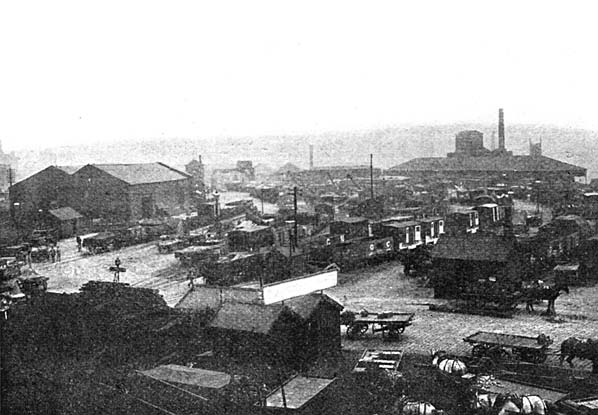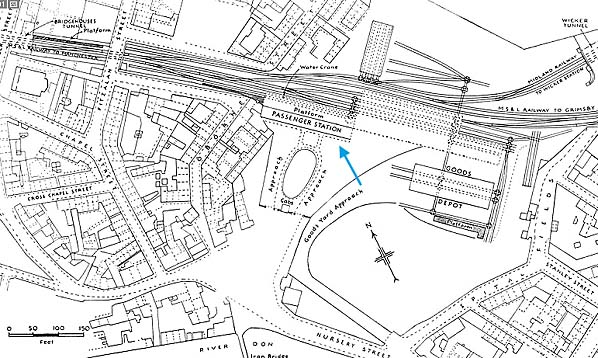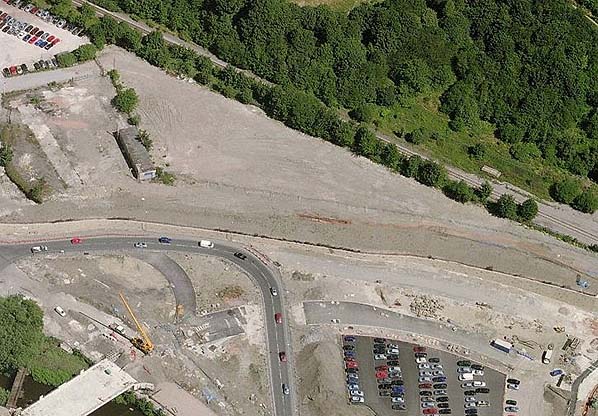|
Notes: The first proposal to build a railway between Manchester and Sheffield came in the autumn of 1830 when a consortium headed by George Stephenson was selected to build a line across the
Pennine ridge. Stephenson's proposed route would need to be heavily engineered with 6½ miles
of tunnels along its 43 mile course. The Sheffield & Manchester Railway obtained its Act of
Incorporation on 23rd August 1831 but the steep gradients and the tunnels made the line too
costly and the scheme was soon abandoned.
In 1835 the Sheffield, Ashton-under-Lyne & Manchester Railway was formed with a new proposal to link Manchester and Sheffield. The new route required only two miles of tunneling running from a station at Manchester in or near Store Street via Gorton, Ashton-under-Lyne Hyde,
Glossop, Woodhead, Thurleston, Penistone and Wortley and on to Sheffield with a terminus at
the Cattle Market. Following a survey of the route, it was decided to lengthen of the summit tunnel from two to three miles which meant no gradient on the main line would be steeper than 1 in 120, there was also a deviation form the original route with Glossop being by-passed about three-quarters of a mile to the north.
The Bill for the SA & M was put before parliament in November 1836. It met with comparatively little opposition and after discussions with the Manchester and Birmingham Railway the SA & M. was granted the use of ¾-mile of the M. & B. line running into a joint terminal at London Road, Manchester. The company received its act on 5th May, 1837.Some modifications to the original scheme had to be made to save money notably at Sheffield where the line would now terminate on Nursery Street in the Bridgehouses district of the city and the tunnel at Woodhead would now only be single track.
Construction started in the middle of the line on 1st October 1838 at the western entrance of the Woodhead tunnel. Despite labour disputes the first single track section of the line between Manchester and a temporary terminus at Godley opened to passengers on 17th November 1841. As the joint station in London Road was not yet ready a temporary terminus was opened
in Travis Street.
The SA & M pushed slowly eastwards during the next three years, and new stations were brought into use at Ardwick and Gorton. On 10th December 1842 the line was opened to Broadbottom (later renamed Mottram & Broadbottom) and a fortnight afterwards, on Christmas Eve, Dinting (known as Glossop until the branch to that place was opened) was reached. From Dinting a coach took travelers forward to the Angel or Commercial Hotels in Sheffield, thus bringing that town within five hours of Manchester.
In the summer of 1843, the Directors of the Sheffield & Rotherham Railway approached the SA.
& M with the suggestion that a junction between them should be built in Sheffield, and the S & R Wicker terminal used by both companies. The proposal was undoubtedly prompted by the
fear that a scheme then afoot to build a line from the future SA & M terminal on Nursery Street to the North Midland Railway at Chesterfield would rob the S & R of the revenue they were then obtaining from the North Midland for the use of their line between Sheffield and Masborough. The S & R's proposition was declined although four years later a connection with the S & R was built after the Midland Railway had taken over the line.
The next section, from Dinting to Hadfield and Woodhead was opened on 8th August 1844. All that now remained was the completion of the Woodhead tunnel, at 3m 22yds. the longest railway tunnel in the UK at that time. The formal opening of the Woodhead tunnel and of the whole line between Manchester and Sheffield took place on Monday 22nd December 1845 with the first passenger trains running the following day Sheffield Bridgehouses Station consisted of a single arrival and a departure platform, the SA & M offices being located at the Sheffield end of platform.
In 1846 a number of lines including the SA & MR merged to become the Manchester Sheffield
and Lincolnshire Railway. On 1st January 1847 a ½-mile connecting line to the Wicker station of the Midland Railway was brought into use; it is believed this was only used for the exchange of a small amount of freight traffic.In May 1847 construction started of the 600 yard viaduct known as the 'Wicker Arches' across the Don valley, immediately east of the Bridgehouses terminal, to carry the newly formed M S & L to the east coast at the same time the foundations were laid for a new Sheffield station as part of the viaduct at its east end. The new Sheffield Victoria station was ready for opening in the late summer of 1851. The new station opened on 15th September and Bridgehouses became the company's terminal for goods and cattle traffic. The goods depot finally closed on 2nd October 1965 although private sidings remained in use after that date.
The terminal was the subject of a BBC local television documentary 'Engines must not enter the potato siding' which contained vintage film and memories from former railway workers and which was made at the time of the rationalisation of goods traffic in the Sheffield area and the opening of the new Sheffield Freight Terminal in Brightside Lane, adjacent to the site of the former Midland Railway locomotive sheds and yard. The potato siding was situated high above the road and had a wooden floor, fine for wagons and vans but as the title says, not locomotives.
Part of the station site is now used as a car park and part of the retaining wall along Nursery Street has been demolished to make way for the northern section of Sheffield's Inner Ring Road. It has been suggested that this retaining wall may have contained stones from Sheffield Castle.
The station was approached by a ramp from Nursery Street and on the opposite corner a public house was built. Originally named 'The Manchester Railway Hotel' its frontage was damaged in the Sheffield Flood of 1864 and was rebuilt. It was renamed 'The Manchester Hotel' and in Spring 2006, after a short period of closure, became 'The Harlequin', taking the name from a recently demolished pub which stood a short distance away in Johnson Street Before the building of the 'Borough Bridge', which carries Corporation Street across the River Don to reach Nursery Street, passenger access to the station from the city area was by a footbridge. This is still standing adjacent to the new bridge which carries the Inner Ring-Road over the River Don and is in need of restoration. The track through the north part of the site is still in use serving the Stocksbridge Steelworks to the north west of Sheffield.
Source: Wikipedia and The First Railway between Manchester and Sheffield by George Dow, A.M.Inst.T., printed in 1945 by the London & North Eastern Railway to commemorate the centenary of opening of the Sheffield, Ashton-under-Lyne & Manchester Railway. This book can be seen on-line on the Moss Valley web site.
See also: Wadsley Bridge, Dunford Bridge, Woodhead, Penistone
Oughty Bridge & Sheffield Victoria |

 Bridgehouses goods station in 1899
Bridgehouses goods station in 1899

 Home Page
Home Page 